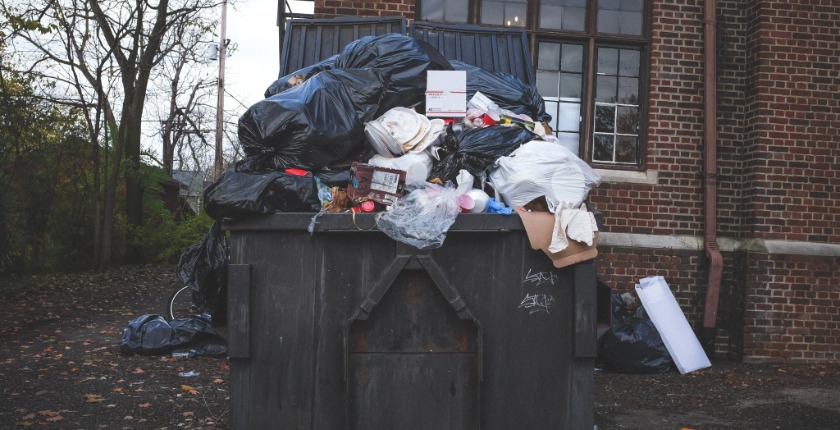Technical Article - November 29, 2019
Insights on sustainable solid waste management techniques


Written by Expert: Philip Kyeremanteng 7 min read
In the past few years we have heard more and more about the Zero waste campaigns. While educating people to reduce their waste production through the promotion of a zero waste approach is an admirable goal, it certainly remains a challenging task. Nowadays approximately 40-50% of the waste generated is not managed properly neither sustainably.
What is considered waste? According to the general definition waste corresponds to any unwanted or unusable materials, also any substance which is discarded after its primary use. Historically with the increase in consumption, driven by the higher life standards achieved in the post-war scenario, more and more waste is generated per-capita on an annual basis. As a result, in recent years there have been significant investments in improving recycling operations and increasing its efficiency. For instance in 2016 over 48% of waste was treated by recycling and recovery processes. However, 24.4% (or 52.3 million tonnes) of waste generated in the UK in 2016 was still diverted to landfill. The reason why a significant percentage of waste continues to be sent to landfill is due to a limited capacity to process waste more sustainably, through techniques such as refused derived fuel (RDF) and energy from waste (EfW) treatment. Because both waste treatment techniques are still under development in the UK– local authorities and companies often have no other choice but to send waste to landfills.
Similarly, a lot of organisations are now looking for sustainable techniques to properly manage waste. In this regard, Government policy intervention is a crucial driver when looking for implementing environmentally-friendly technologies to manage waste sustainably. The specific areas of priorities that most agencies are advocating for in the national solid waste management are:
- Diversion from landfill
- Resource recovery
- Pollution prevention
- Reduction in greenhouse emission / energy recovery
These cover all areas of sustainable waste management and below are the primary techniques that will be able to achieve these through waste hierarchy pyramid, which defines the various waste treatment techniques and categorises their relative sustainability benefits, from most to least favourable:
- Prevention – reducing the percentage of waste that is produced in the first place
- Recycling – composting and reprocessing of waste materials
- Recovery – recovering energy through incineration of waste
- Disposal – incinerating waste without energy recovery and/or diverting waste materials to landfills
What are the waste and disposal techniques currently used ?
Thermal Treatment
Thermal waste treatment refers to the processes that use heat to treat waste materials. Among these the most commonly used thermal waste treatment techniques includes:
Incineration is one of the most common waste treatments. This approach involves the combustion of waste material in the presence of oxygen. This thermal treatment method is commonly used as a means of recovering energy for electricity or heating. This approach has several advantages. It quickly reduces waste volume, lessens transportation costs and decreases harmful greenhouse gas emissions.
Gasification and Pyrolysis are two similar methods, both of which decompose organic waste materials by exposing waste to low amounts of oxygen and very high temperature. Pyrolysis uses absolutely no oxygen while gasification allows a very low amount of oxygen in the process. Gasification is more advantageous as it allows the burning process to recover energy without causing air pollution.
Open Burning is a legacy thermal waste treatment that is environmentally harmful. The incinerators used in such process have no pollution control devices. They release substances such as hexachlorobenzene, dioxins, carbon monoxide, particulate matter, volatile organic compounds, polycyclic aromatic compounds, and ash. Unfortunately, this method is still practiced by many local authorities internationally, as it offers an inexpensive solution to manage solid waste.
Biological Treatment
Composting is another most frequently used waste disposal or treatment method which is the controlled aerobic decomposition of organic waste materials by the action of small invertebrates and microorganisms. The most common composting techniques include: (i) static pile composting, (ii) vermin-composting, (iii) windrow composting and (iv) in-vessel composting.
Anaerobic Digestion also uses biological processes to decompose organic materials. Anaerobic Digestion, however, uses an oxygen and bacteria-free environment to decompose the waste material where composting must have air to enable the growth of microbes.
Dumps and Landfills
Sanitary landfills provide the most commonly used waste disposal solution. These landfills are desired to eliminate or reduce the risk of environmental or public health hazards due to waste disposal. These sites are situated where land features work as natural buffers between the environment and the landfill. For instance, the landfill area can be comprised of clay soil which is quite resistant to hazardous wastes or is characterised by an absence of surface water bodies or a low water table, preventing the risk of water pollution. The use of sanitary landfills presents the least health and environmental risk, but the cost of establishing such landfills is comparatively higher than other waste disposal methods.
Controlled dumps are the same as sanitary landfills. These dumps comply with many of the requirements for being a sanitary landfill but may lack one or two. Such dumps may have a well-planned capacity but no cell-planning. There may be no or partial gas management, basic record keeping, or regular cover.
Bioreactor landfills are the result of recent technological research. These landfills use superior microbiological processes to speed up waste decomposition. The controlling feature is the continuous addition of liquid to sustain optimal moisture for microbial digestion. The liquid is added by re-circulating the landfill leachate. When the amount of leachate is not adequate, liquid waste such as sewage sludge is used
References
- How Waste and Resource Management Works by Environmental Service Association
- Waste Treatment and Disposal 2nd Edition by Paul T. Williams.
- Reducing the reliance on landfill in England Report by the Controller and Auditor General HC1177 Session 2005-2006
- https://www.thebalancesmb.com/waste-treatment-and-disposal-methods-2878113

Written by Expert: Philip Kyeremanteng on November 29, 2019
